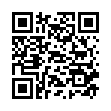|
Computer science
Investigation of the frequency properties of a standard linear body
V. P. Tregubov, N. K. Egorova
St. Petersburg State University, 7-9, Universitetskaya nab., St. Petersburg, 199034, Russian Federation
Abstract:
It is known that the Kelvin—Voigt model does not describe stress relaxation, which is observed along with elastic properties in many polymers and biomaterials. In this regard, the standard linear body model is used to describe the properties of these materials. Studies of its properties were mainly limited to the study of its reaction to an instantaneously applied load, as well as to the determination of the time and nature of stress relaxation. At the same time, the frequency properties of the standard linear body remained unexplored. In this regard, an analysis of its frequency properties was carried out, which made it possible to study its behavior under vibration exposure. On the basis of the equation of motion, the amplitude-frequency response (AFC) was constructed, and its peculiarity was revealed, which consists in the fact that an increase in the damping coefficient leads to a decrease in the maximum value of the AFC only to a certain value greater than one. A further increase in the damping coefficient leads to an increase in the maximum frequency response up to infinity at a frequency that should also be considered resonant. Thus, the frequency response of a standard linear body always has a maximum. The subsequent increase in the damping coefficient leads to the tendency of the maximum frequency response to zero at infinity.
Keywords:
standard linear body, frequency response, model parameters, uniqueness of parameter values.
Received: December 18, 2020
Accepted: April 5, 2021
Citation:
V. P. Tregubov, N. K. Egorova, “Investigation of the frequency properties of a standard linear body”, Vestnik S.-Petersburg Univ. Ser. 10. Prikl. Mat. Inform. Prots. Upr., 17:2 (2021), 166–173
Linking options:
https://www.mathnet.ru/eng/vspui487 https://www.mathnet.ru/eng/vspui/v17/i2/p166
|

| Statistics & downloads: |
| Abstract page: | 61 | | Full-text PDF : | 15 | | References: | 24 | | First page: | 4 |
|




 Contact us:
Contact us: Terms of Use
Terms of Use
 Registration to the website
Registration to the website Logotypes
Logotypes








 Citation in format
Citation in format 